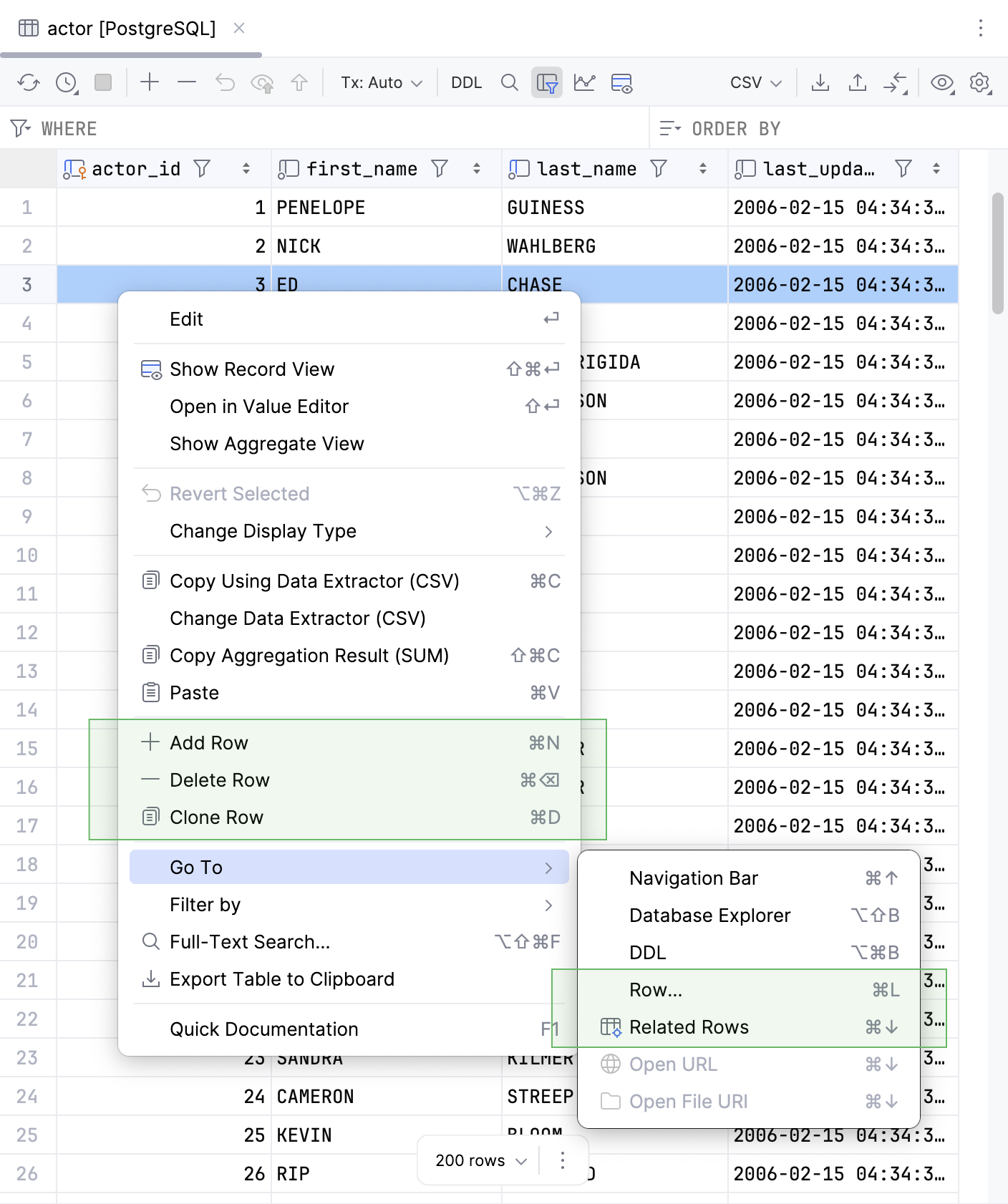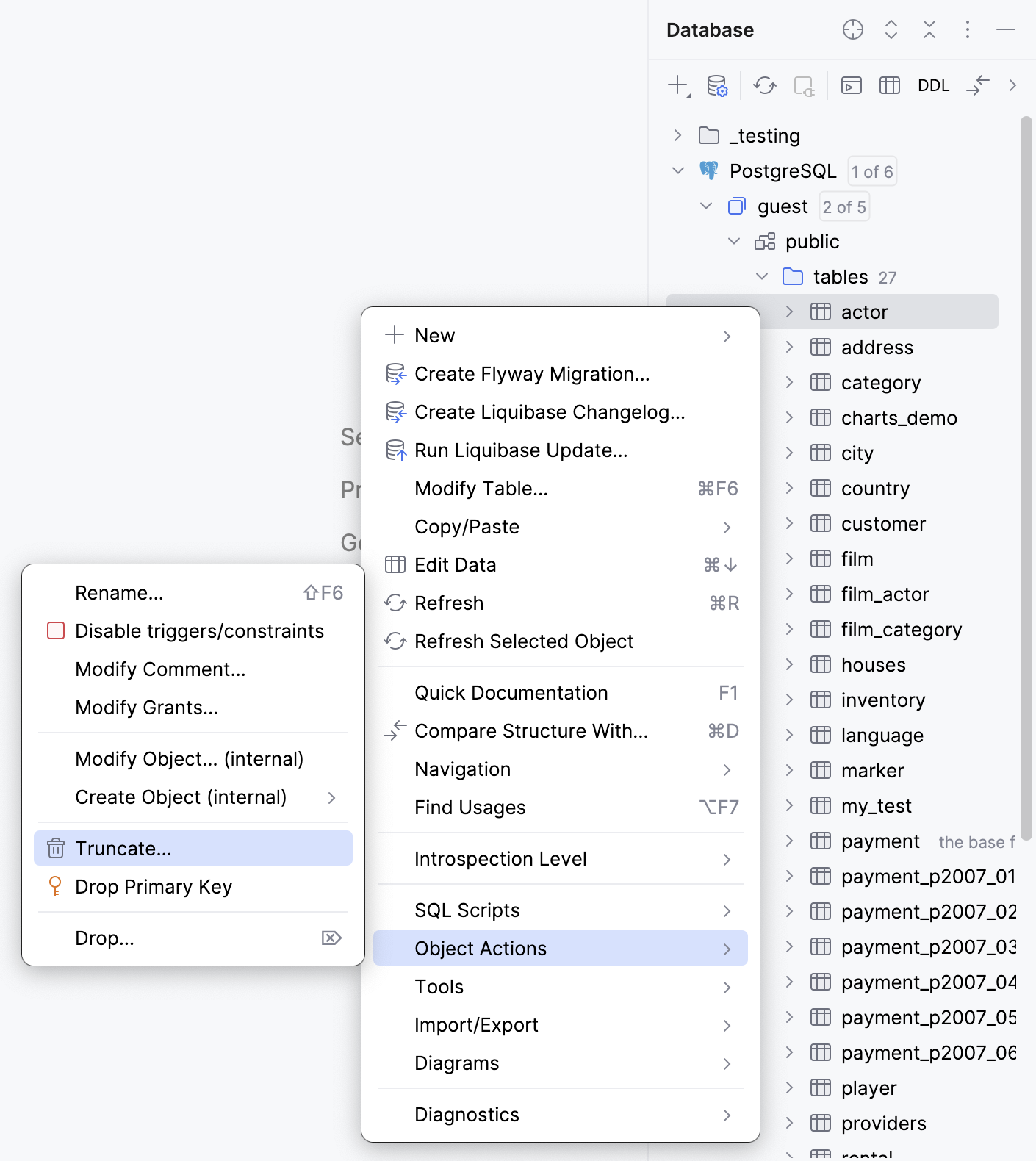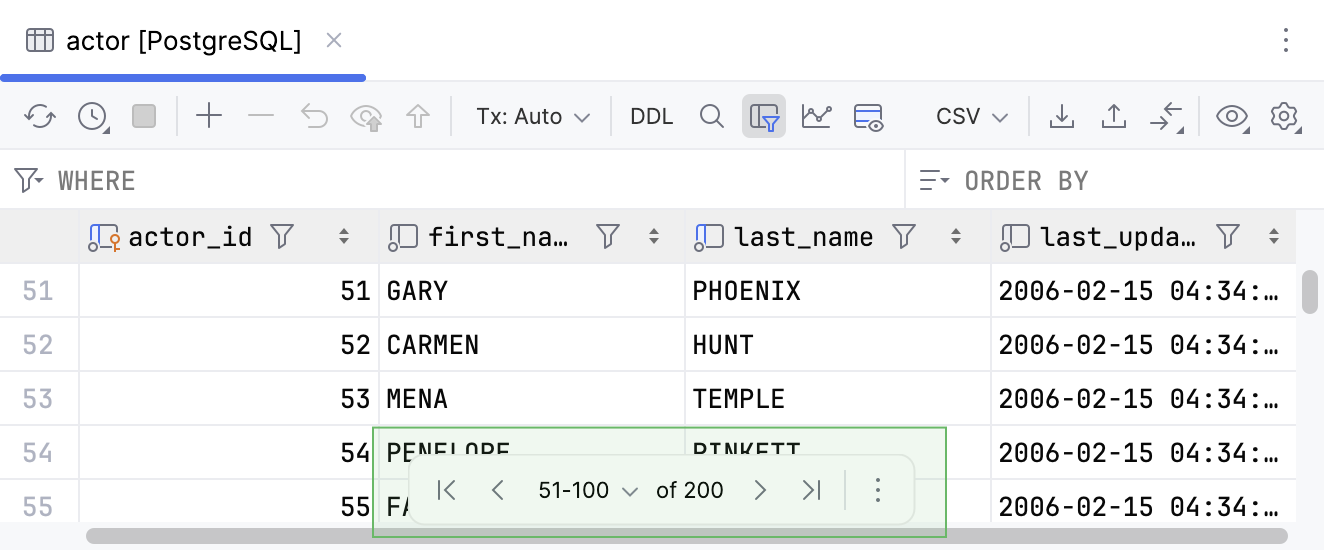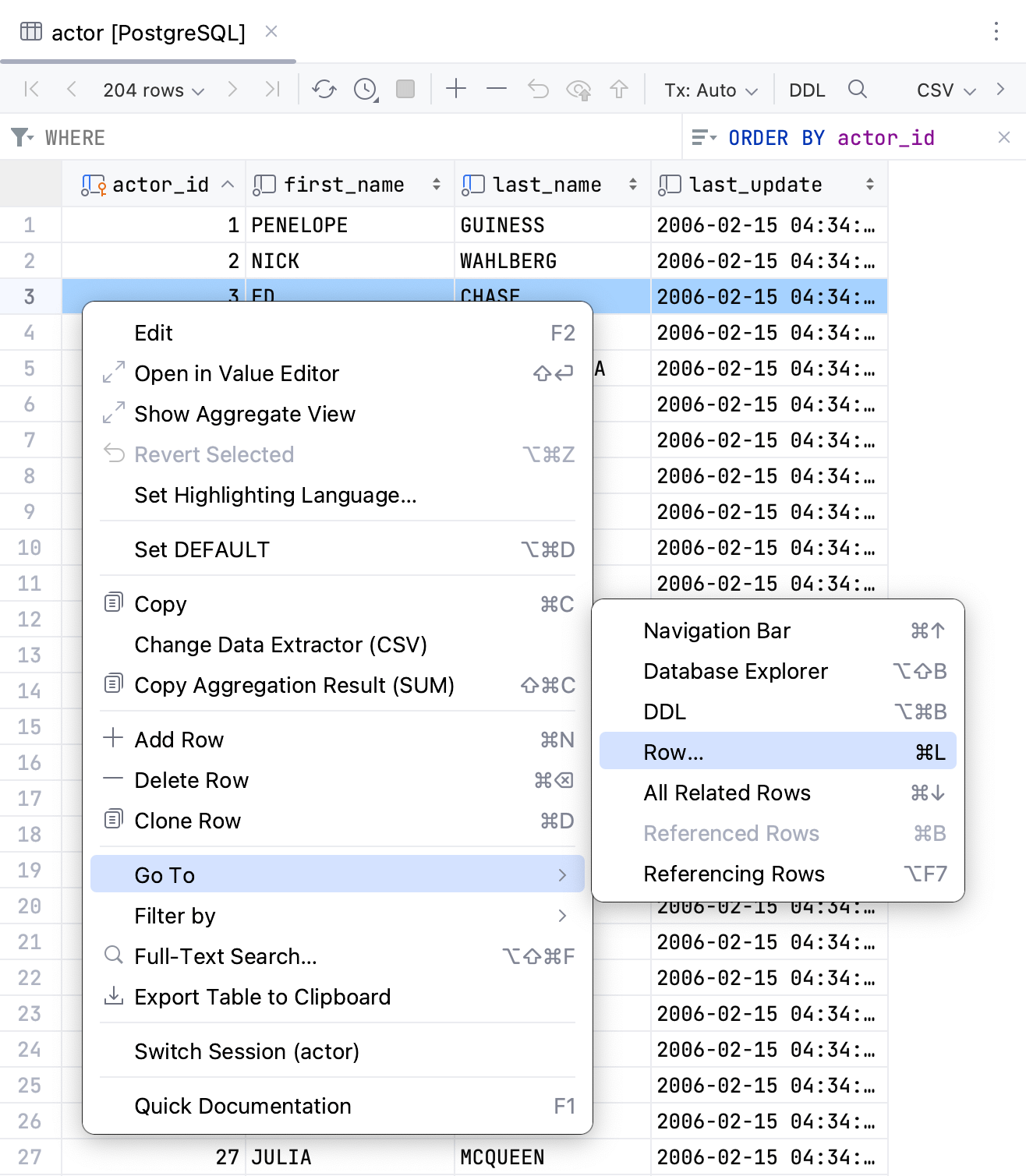Rows
In the data editor, you can add, clone, delete, and navigate between related rows.

Manipulating rows
Add a row
Click
Add Row on the toolbar. Alternatively, right-click the table and select Add Row from the context menu.
Press Alt+Insert.
Make your changes.
Delete a row
Select a row or rows.
To select multiple rows, click numbers in the gutter. Also, you can press Ctrl and click the necessary rows.
Click
Delete Row on the toolbar. Alternatively, press Ctrl+Y or Delete.
Remove all rows in a table
Right-click a table and navigate to .

Clone rows
You can clone a selected row. The copy of the row is added to the end of the table.
To clone a row, right-click the row and select Clone Row. Alternatively, select the row and press Ctrl+D.

Make your changes.
Paste CSV lines
In PhpStorm, you can directly paste multiple CSV lines into a table. The original lines will be split into columns in accordance with the commas. The content of CSV lines will replace that of table rows. If the table does not contain enough rows, new ones will be created.
Select the rows that you want to paste your CSV lines into.
Alternatively, select the table row that you want to paste the first line of your CSV lines into.
Press Ctrl+V. Alternatively, select Paste in the context menu.
Submit and commit your changes to the database
Depending on the current transaction mode, you can submit and commit your changes to the database by doing one of the following:
Tx:Auto mode: click
Submit on the toolbar. The changes will be committed to the database automatically.
Tx:Manual mode: click
Submit to submit your changes and
Submit and Commit to commit the submitted changes to the database.
For more information about committing changes to the database, refer to the Submit changes to a database topic.
Set the number of rows in the data editor
Set a number of rows in the result set
By default, when you issue a query, the number of returned rows is limited to 500. This limitation is introduced to avoid an overload (for example, when your
SELECTstatement returns one million rows).To change this limit, open settings Ctrl+Alt+S and navigate to . In the field, specify a new number. To disable the limitation, clear the Limit page size to checkbox.
Click the current row range in the grid pagination control and select the desired value from the Page Size list.
Make all rows visible simultaneously
Open settings Ctrl+Alt+S and navigate to .
Clear the Limit page size to checkbox, and click OK.
Click
Refresh or press Ctrl+F5 to refresh the table view.
Navigation between rows
This chapter describes how you can navigate between related rows of one or several tables. For example, you can use this functionality to navigate between tables by using primary or foreign keys.
Depending on the value of the Limit page size to parameter, the result set might be divided into several pages. For example, you set the Limit page size to parameter to 100, but your query returned 200 rows. You will have two pages of rows, with 100 rows on each page.
Navigate between subsets of rows
To navigate between pages, use the following controls:
First Page: Navigates to the first page of the result set.
Previous Page: Navigates to the previous page of the result set.
Alternatively, press Ctrl+Alt+Up.
Next Page: Navigates to the next page of the result set.
Alternatively, press Ctrl+Alt+Down.
Last Page: Navigates to the last page of the result set.

Go to a specified row
To navigate to a row with a specified number, right-click the table and select Ctrl+G. In the Go to Row dialog, specify the row number and click OK.

Navigate to an object DDL
In the data editor, right-click a cell of the column whose DDL you want to open, and navigate to .
Alternatively, open the Go to Action dialog by pressing Ctrl+Shift+A and type
DDL.
Navigate between related rows
Right-click a row or cell in a table and select .
Alternatively, select a cell and click
Related Rows on the quick actions popup toolbar that appears.

In the data editor, you can select several values and navigate to the related data.
For more information about the action behavior options, refer to Advanced Settings.